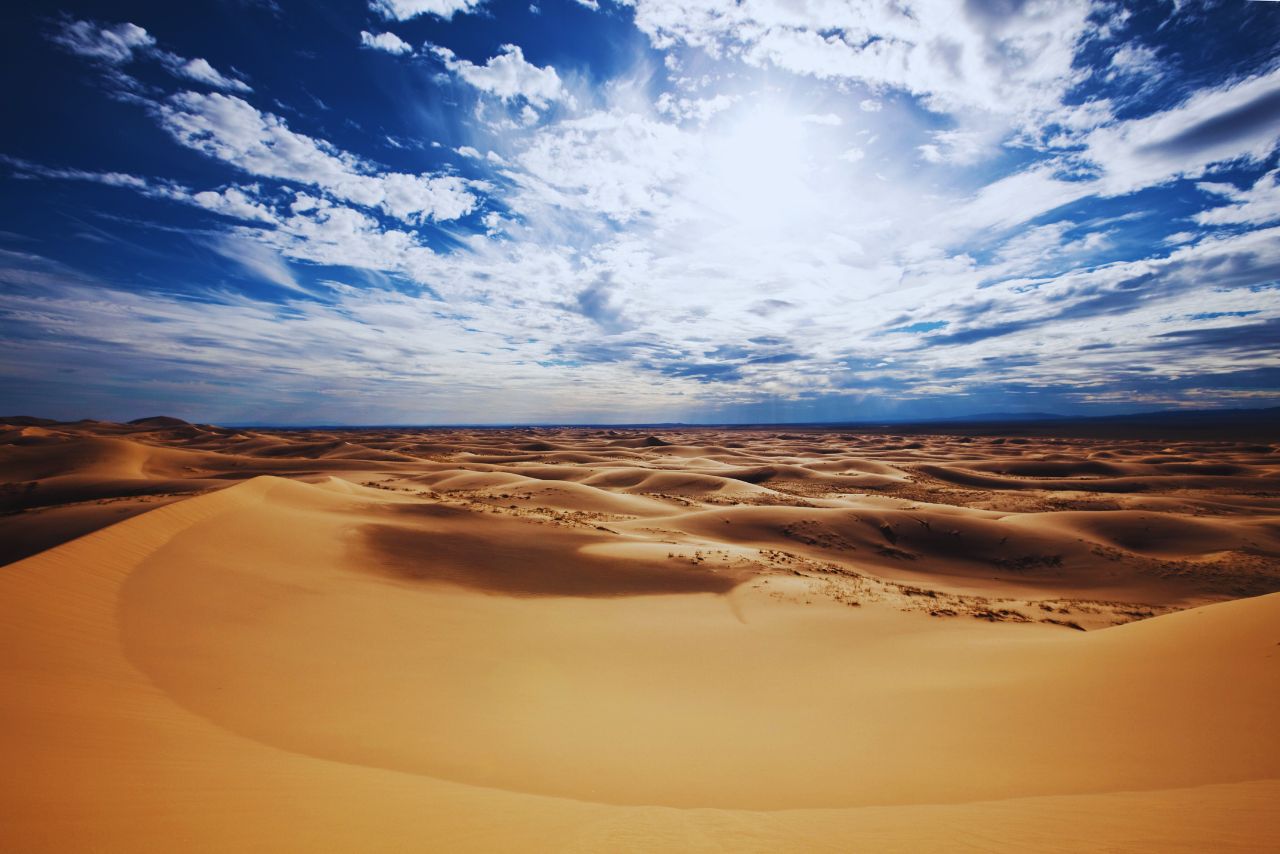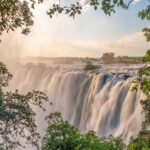The call of the open road is real, but the call of the open sand is something entirely different.
It’s a primal whisper, the original invitation to adventure. Forget what you think you know about deserts; they’re not barren or empty places.
They’re breathing landscapes of epic proportions, painted in colors you never knew existed, from iron-red dunes to the blinding white of salt pans.
Africa, the cradle of civilization, hosts some of the world’s most remarkable deserts, more than any other continent.
These vast landscapes stretch across nearly a third of its land, shaping its geography and identity.
Each desert tells its own story, revealing beauty, solitude, and a raw connection to nature that grounds you and stirs something sacred within.
To truly understand the continent, you must first understand its deserts.
If your soul is craving a break from the predictable, if your wanderlust is nudging you toward something wild and unforgettable, this is your sign.
The Sahara Desert (North Africa)
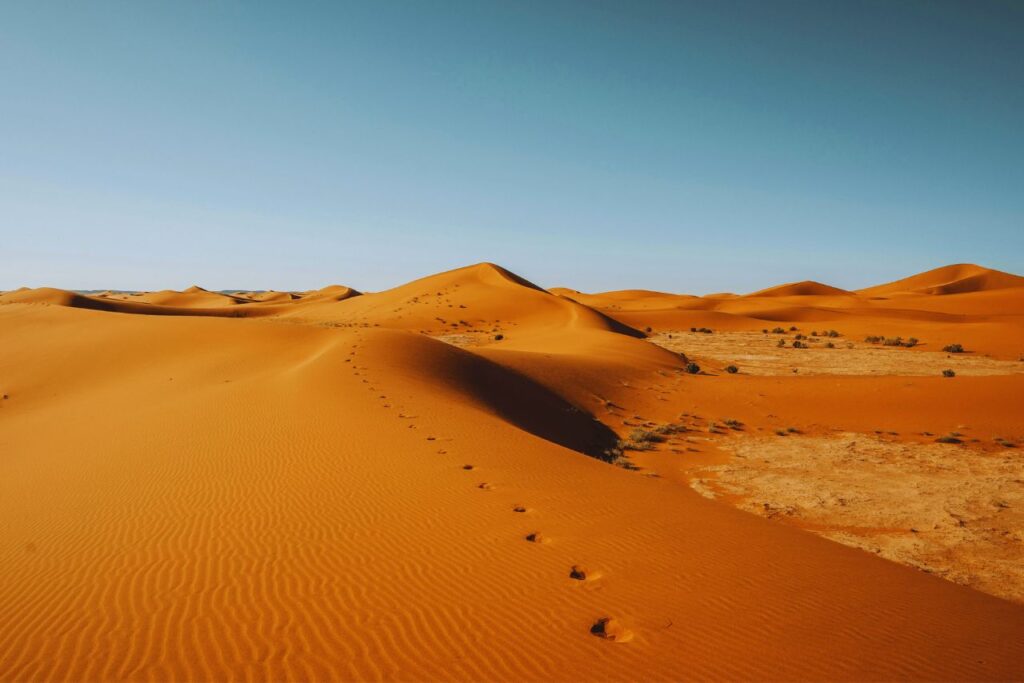
The Sahara Desert is the largest hot desert on Earth, stretching over 6,400 kilometers across eleven countries, including Morocco, Algeria, Tunisia, Libya, Egypt, Mauritania, Mali, Niger, Chad, Sudan, and Eritrea.
It’s a world of extremes, where daytime heat can soar past 46°C (115°F) and rainfall is rare.
Yet the Sahara is far from empty. Vast sand dunes, gravel plains, and rocky plateaus define its endless horizons, while oases bring bursts of life amid the silence.
It is home to creatures like the Fennec Fox, Dorcas Gazelle, and Barbary Sheep, and it also shelters Tuareg and Bedouin nomads who’ve navigated its dunes for centuries.
Once, their ancient trade routes carried salt and gold across the desert.
Today, travelers come for its stillness, star-filled skies, and the deep sense of wonder that only the world’s greatest desert can give.
Best time to visit: Spring (March to May) and Autumn (September to October)
The Kalahari Desert (Southern Africa)

Covering much of Botswana, the northeast of Namibia, and the western edge of South Africa, the Kalahari Desert is not a true desert but a vast semi-arid savanna.
Locals describe its landscape using terms like “woodland,” “strandveld,” “bri jumps,” and “savanna,” reflecting its surprising diversity.
Unlike the barren Sahara, the Kalahari receives seasonal rainfall, supporting acacia trees, shrubs, and tall grasses that come alive after the rains.
Home to the San people, one of the world’s oldest continuous cultures, the Kalahari is rich in wildlife.
You’ll find meerkats, springbok, cheetahs, and lions roaming its red dunes and wide plains.
The nearby Okavango Delta, which floods each year, transforms parts of the desert into a thriving oasis.
And if you visit at the right time, you might witness the breathtaking Kalahari stars, a rare meteor shower that lights up its vast night skies.
Best time to visit: Dry winter months, July and August (perfect time to see large games).
The Namib Desert (Southwestern Africa)

Running along Namibia’s Atlantic coast and stretching into parts of Angola and South Africa, the Namib Desert is believed to be the oldest desert in the world, with some areas dating back over 55 million years.
Its vast red dunes, pale salt pans, and dramatic coastal cliffs form one of Africa’s most hauntingly beautiful landscapes.
The desert’s scorching days and cool, fog-filled mornings create an atmosphere that feels both ancient and alive.
Despite its harshness, the Namib teems with life.
Desert-adapted elephants, oryx, geckos, and the elusive desert lion have learned to survive in its extremes.
Fog rolling in from the Atlantic provides much of the region’s precious moisture, nourishing unique plants like the Welwitschia mirabilis, a prehistoric species found nowhere else on Earth.
Along the Skeleton Coast, rusting shipwrecks and scattered bones tell tales of lost sailors and shifting sands.
And near Sossusvlei, the dunes rise nearly 300 meters (1,000 feet) high, glowing crimson under the morning sun, a sight every traveler should witness at least once.
Best time to visit: July to October
The Danakil Desert (Northeastern Africa)
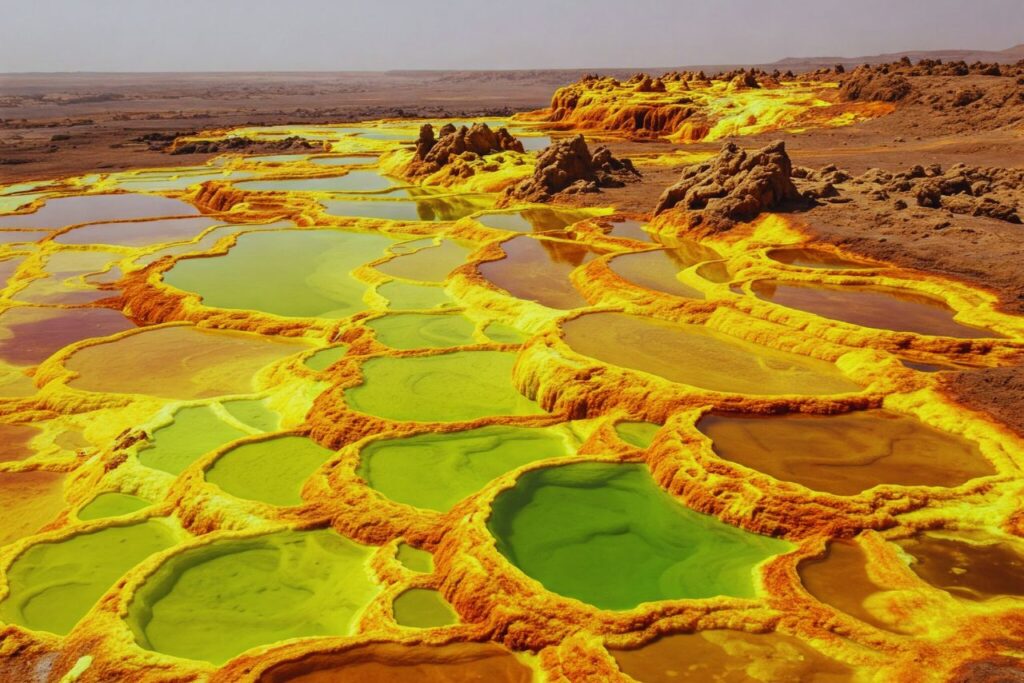
In the northeastern corner of Africa lies the Danakil Desert, one of the hottest and most extreme environments on Earth.
Stretching across Ethiopia, Eritrea, and Djibouti, this remote desert is a geological wonder shaped by volcanic activity and shifting tectonic plates.
Daytime temperatures can soar above 49°C (120°F), creating a surreal landscape of salt flats, lava fields, and steaming sulfur springs.
At its heart lies the Dallol Crater, a kaleidoscope of bubbling pools, acid ponds, and bright orange mineral deposits that look more like another planet than Earth.
The Afar people have lived here for generations, mining blocks of salt by hand and transporting them by camel caravan across the shimmering plains.
The desert also hosts Erta Ale, one of the few volcanoes on the planet with a permanent lava lake.
The Danakil’s otherworldly terrain attracts only the most daring travelers, but those who brave its heat find one of Africa’s most unforgettable natural wonders.
Best time to visit: November to February
The Karoo Desert (South Africa)
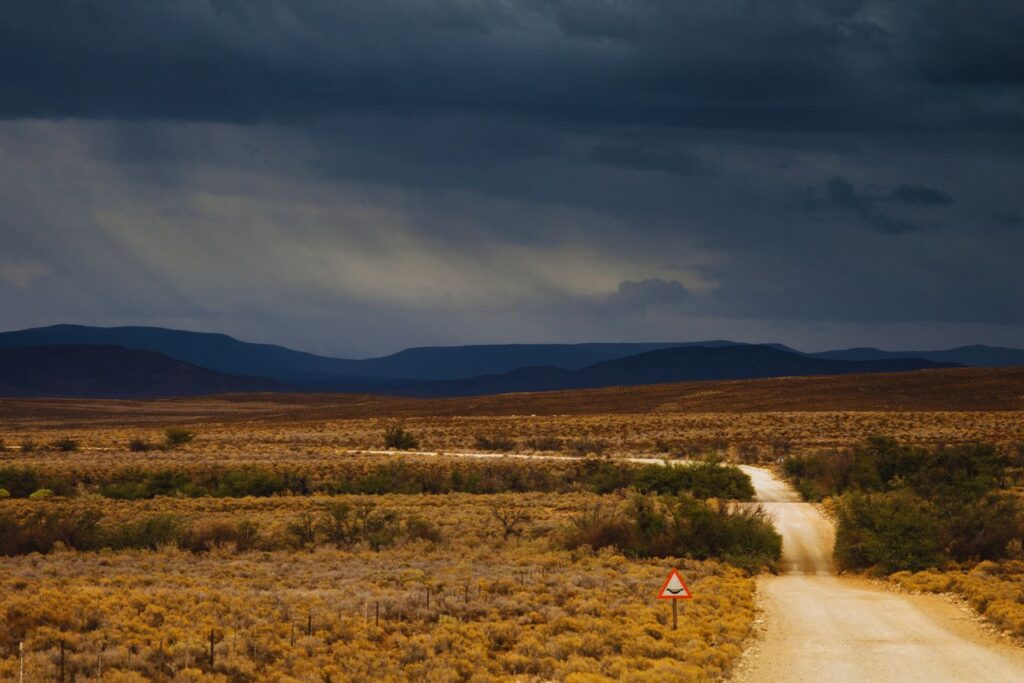
The Karoo Desert is a vast semi-arid region in South Africa, divided into the Great Karoo and the Little Karoo.
Though not a true desert, its long dry seasons, hardy vegetation, and endless open plains give it a rugged beauty that captures the spirit of the wild South.
The landscape supports unique succulent plants, rare reptiles, and resilient communities that have adapted to its rhythm of drought and rain.
For generations, the Karoo’s wide plains were known for sheep farming, but today, it’s also a frontier for science and stargazing.
The area’s clear skies and isolation have made it the site of the groundbreaking Square Kilometre Array (SKA), one of the world’s largest astronomical research projects.
If you’re crossing the Great Karoo by road or spending a quiet evening under its dazzling night sky, the Karoo offers a rare mix of simplicity, silence, and cosmic wonder.
Best time to visit: April to September
The Chalbi Desert (Northern Kenya)
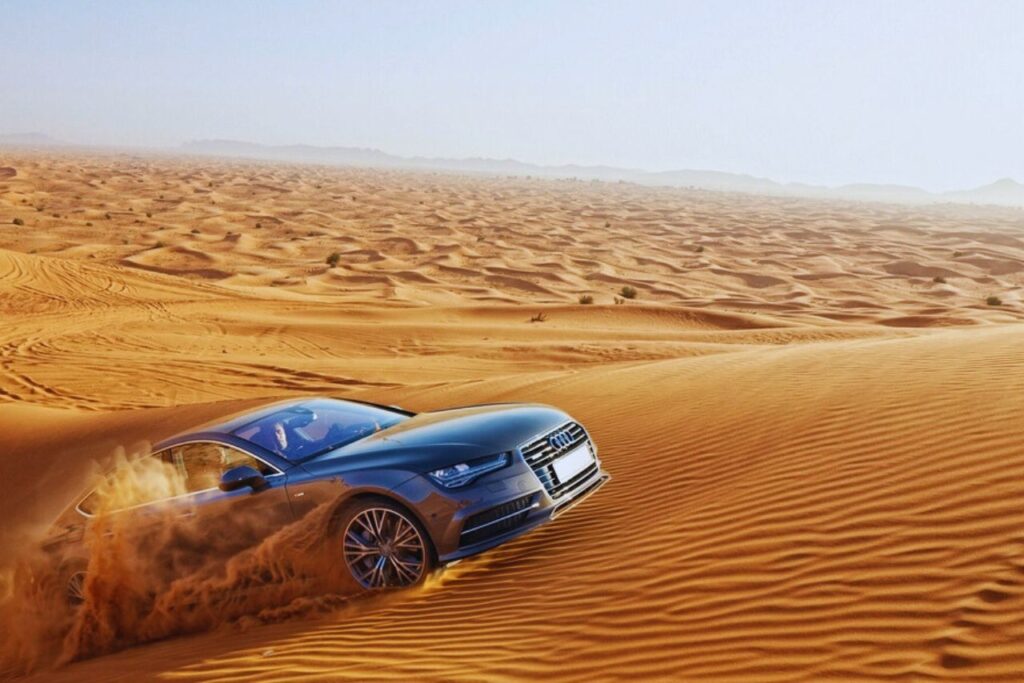
Photo source: labaafrica
The Chalbi Desert lies in northern Kenya, close to the Ethiopian border, and is one of the country’s hottest and driest regions.
Its name, “Chalbi,” means “bare and salty” in the Gabbra language, a fitting description for its vast salt pans, volcanic hills, and scattered dunes.
Once a prehistoric lakebed, the desert now features rocky plains and thick clay deposits.
Nomadic communities such as the Rendille and Gabbra have adapted to its harsh climate by herding camels and goats across its arid landscape.
During the rare rains, parts of the desert transform into a shimmering temporary lake, a striking contrast to its usual dryness.
The Chalbi Desert’s raw, untouched beauty and rare wildlife make it one of the most fascinating and photogenic deserts in Africa.
Best time to visit: January to February and July to October
The Nubian Desert (Northeastern Africa)
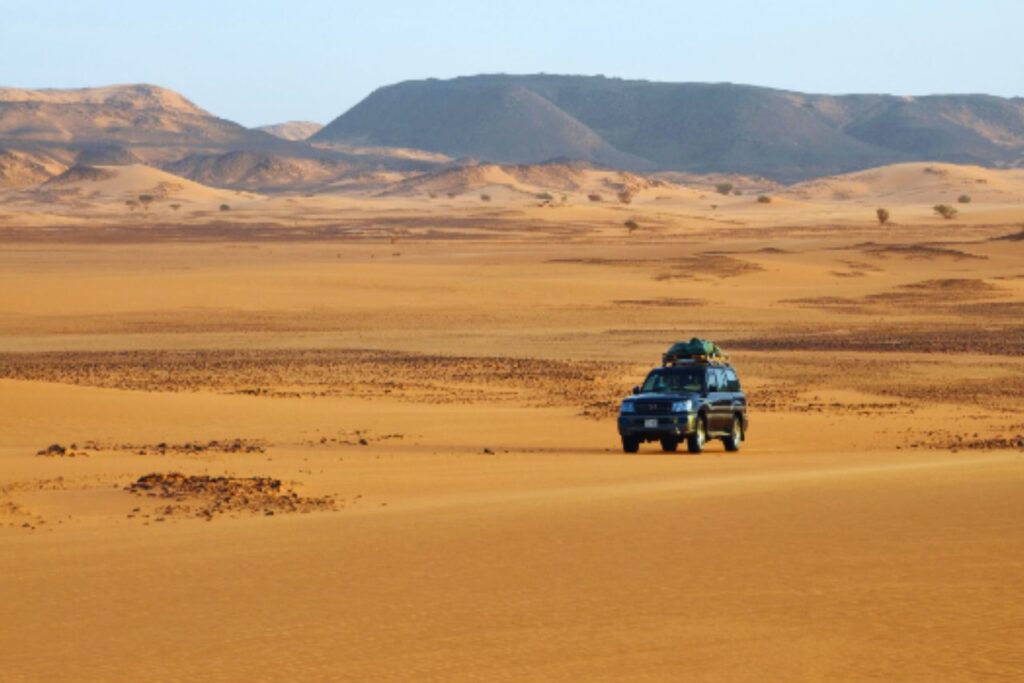
Photo source: italtoursudan
Stretching across northeastern Sudan and into southern Egypt, the Nubian Desert forms a rugged extension of the Sahara between the Nile River and the Red Sea.
It is a land of rocky plateaus, gravel plains, and scattered mountain ranges, receiving almost no rainfall throughout the year.
Unlike the sweeping dunes of the central Sahara, its beauty lies in its stark terrain and endless horizons.
Historically, this desert was part of ancient Nubia, one of Africa’s earliest civilizations, known for its powerful kingdoms and rich trade in gold, ivory, and livestock.
Remnants of ancient temples, burial sites, and caravan routes still mark its landscape, offering glimpses into a time when the region was a vital link between sub-Saharan Africa and Egypt.
Today, the Nubian Desert remains sparsely populated, yet it continues to play a key role in archaeology, geology, and historic exploration.
Its silence, broken only by the desert wind, holds stories of both survival and legacy, a quiet echo of Africa’s enduring past.
Best time to visit: April to September
The Libyan Desert (North Africa)
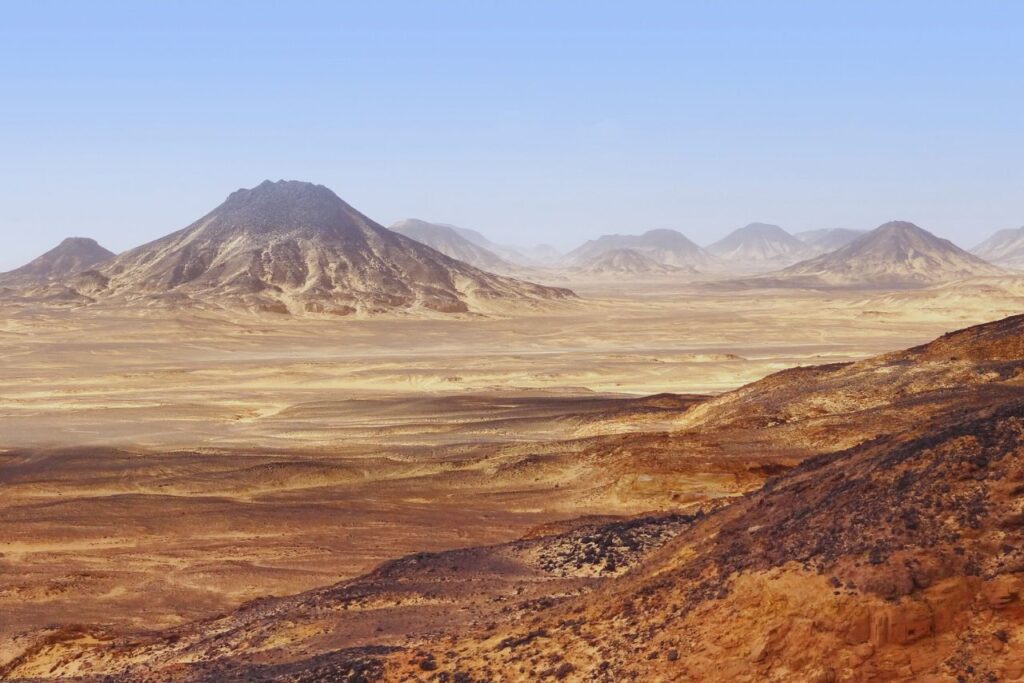
Part of the greater Sahara, the Libyan Desert stretches across much of eastern Libya and spills into Egypt and northern Sudan.
It is one of the driest and most remote regions on Earth, a place where some areas haven’t seen measurable rainfall in decades.
The landscape is an otherworldly mix of vast sand seas, gravel plains, and barren limestone plateaus that shimmer under the relentless sun.
Despite its extreme climate, the desert holds a quiet allure.
Hidden among the dunes are ancient petroglyphs, fossil beds, and ruins that whisper stories of early life and long-lost trade routes.
Scattered oases such as Kufra and Jaghbub sustain small communities and patches of cultivation, offering rare pockets of green in a sea of gold.
Today, while oil and gas exploration has introduced limited infrastructure, much of the Libyan Desert remains untouched, a raw, formidable expanse.
This challenges explorers and enchants photographers with its haunting solitude and endless horizons.
Best time to visit: October to March
The Ténéré Desert (South-central Sahara Desert)

Photo source: alluringworld
The Ténéré Desert lies in the heart of the Sahara, spanning northeastern Niger and parts of western Chad.
Often called the “Desert within the Desert,” it is one of the most isolated and forbidding places on Earth, a sea of golden dunes stretching endlessly under an unforgiving sun.
Once covered by prehistoric lakes, the Ténéré’s landscape is now shaped by shifting sands and ancient fossil beds.
Despite its emptiness, it holds traces of human history, from Stone Age artifacts to the famous Tree of Ténéré, once known as the most isolated tree on the planet before it fell in 1973.
Nomadic Tuareg communities still traverse this vast expanse, guiding camel caravans across routes once used for centuries of trans-Saharan trade.
For modern travelers, the Ténéré remains a place of silence and immensity, a hauntingly beautiful reminder of nature’s power and time’s passage.
Best time to visit: November to March
The Grand Bara Desert (Djibouti)
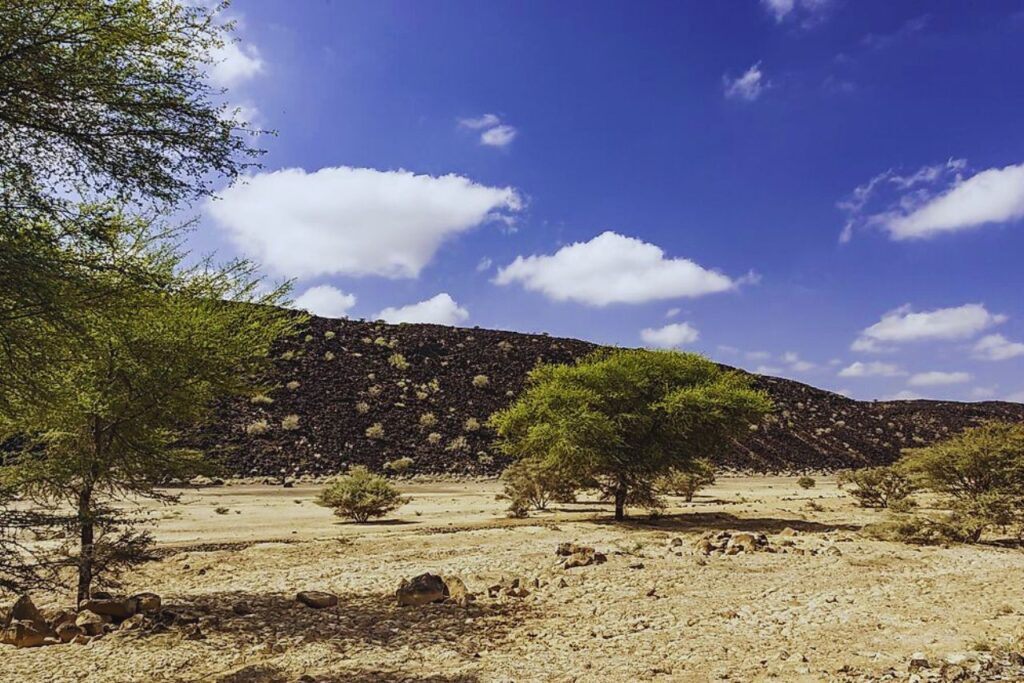
Photo source: worldatlas
In southern Djibouti, the Grand Bara Desert stretches across an ancient dried lake bed, forming one of East Africa’s most striking arid landscapes.
Flat, vast, and almost entirely devoid of trees, its cracked earth and endless sand plains give it an otherworldly beauty.
Covering about 130 square kilometers, the Grand Bara is classified as both arid and semi-desert, where only the hardiest forms of desert grass manage to survive.
Despite its harshness, life finds a way here.
Small antelopes like dik-diks and resilient oryxes roam the plains, perfectly adapted to the heat and scarcity of water.
Each year, the desert comes alive with energy during the Grand Bara 15 km Run, an annual event organized by the French Foreign Legion that attracts athletes from around the world.
Visitors can enjoy an authentic desert experience at nearby camps such as Grand Safari Desert Camp, which offers affordable stays close to the open sands.
Best time to visit: November to March
Final Thoughts
The desert tells a different story every time one ventures into it.” — Robert Edison Fulton Jr.
Thus, the deserts of Africa whisper tales of endurance, mystery, and quiet beauty to anyone willing to listen.
They challenge the body, calm the mind, and awaken the soul in ways few places can.
These landscapes are not lifeless voids but living, breathing worlds where every dune and horizon holds a lesson in patience and wonder.
So, when the familiar starts to feel too small, let Africa’s deserts be your next chapter.
Go where silence speaks, where stars burn bright, and where the earth itself feels timeless.
The story waiting out there might just change the way you see the world.

